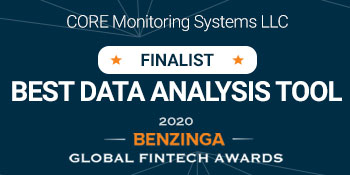Why Investors Are Ditching High- Or Low-Cost Smart Beta For Mid-Range Active ETFs Like JEPI, JEPQ
Author: Chandrima Sanyal | November 13, 2025 11:02am
The U.S. ETF market’s fastest-changing battleground isn’t at the top or bottom of the fee spectrum-it’s in the middle. That’s according to CFRA’s latest thematic research report. And the middle-cost range —defined as ETFs with expense ratios between 0.26% and 0.75% —is where the real disruption is happening.
Active ETFs continue to lead in the mid-cost segment.
As CFRA’s Aniket Ullal noted, “Active ETFs have been taking market share from smart beta ETFs.” Until as recently as 2022, the report notes, smart beta ETFs attracted more annual inflows than active funds in this bracket. That trend has sharply reversed, with investors increasingly looking for active strategies wrapped in the familiar ETF format.
The shift underscores how investors are rethinking the value of factor-based ETFs that once promised to beat the market through systematic tilts. “Active strategies are increasingly replacing ETFs that provide indexed exposure to investment factors like growth, dividends, momentum, or low volatility,” the report noted.
Dividend Strategies Shift To Active Management
Dividend-focused ETFs that were once staples of the smart beta category—such as the SPDR S&P Dividend ETF (NYSE:SDY) and iShares Select Dividend ETF (NASDAQ:DVY)—have lost their shine. According to CFRA, both funds "have had outflows in every calendar year" since 2022, while actively managed dividend ETFs like Capital Group Dividend Value ETF (NYSE:CGDV) have seen significant inflows.
Leading this new wave are JPMorgan Equity Premium Income ETF (NYSE:JEPI) and JPMorgan Nasdaq Equity Premium Income ETF (NASDAQ:JEPQ), two products that have turned covered-call income into mainstream ETF strategies. CFRA highlighted, “Active ETFs in the medium cost segment have grown at a rapid pace, underscoring demand for active strategies in the ETF wrapper.”
Capital Group And JPMorgan Fuel Active Growth
While BlackRock and State Street still dominate much of the mid-cost ETF market, active specialists are catching up fast. “Issuers like Capital Group and JP Morgan, who are known for active management, are growing rapidly,” says Ullal. Of Capital Group’s 25 ETFs listed in the U.S., 22 fall into this middle-price category, and every one of them is active.
The Sweet Spot of ETF Innovation
If the low-cost space is about scale and the high-cost one about innovation, the mid-tier may soon become the ETF industry’s sweet spot. The trend is something like the rise of the ETF middle-class. This is where, as CFRA concluded, “active management meets affordability,” and where the next phase of ETF evolution is already underway.
Read Next:
Image: Shutterstock
Posted In: CGDV DVY JEPI JEPQ SDY





